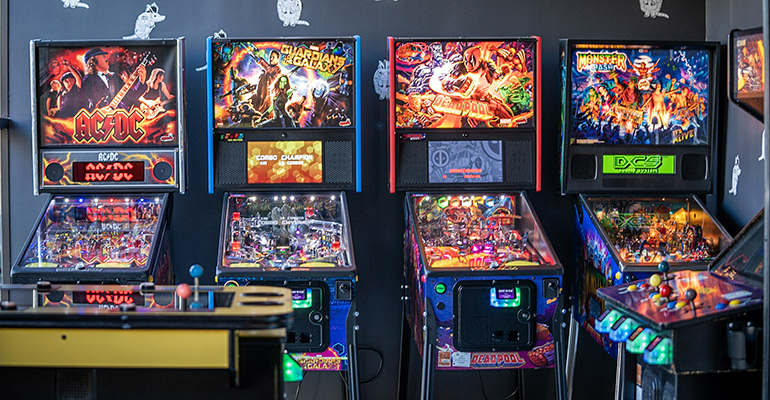More than seven years ago, the Nation’s Restaurant News team looked ahead to the year 2020 to see where restaurants and their design might be headed.
Of course, that was before delivery ballooned as a convenience, before plant-based “meats” took over menus and before technology wound its wiring deep into every aspect of the business.
They year 2020 is well under way. How did our “2020 Vision” prognostications hold up? Darn well, actually. As futurists, our success record rivals that of Michio Kaku.
Then-colleague Mark Brandau and I talked with industry leaders about what they envisioned for the future in a year when DoorDash Inc. (founded in July 2013) was in its infancy and Uber Eats, which wouldn’t launch until August 2014, was just an idea.
The story looked at how the future would impact restaurant architecture and design.
“The lines between industry segments will blur further, with quick-service chains adopting the upscale decor of casual-dining competitors — localized through art and graphics — and full-service and fast-casual brands adopting tools to speed up service,” we wrote in 2013.
Discover Bret Thorn's analysis of 2013 food predictions here.
That has come to pass, with such juggernauts as Dine Inc.’s Applebee’s Neighborhood Grill and Bar and Bloomin’ Brand Inc.’s Outback and Carrabba’s developing fast-casual express units to be closer to the growing number of delivery customers.
Here’s a look at our 2020 predictions from 2013:
Upgraded seating: We predicted quick-service restaurants would offer upgraded seating and fixtures more posh than plastic and institutional looks. While this came to pass modestly, what we didn’t predict was that restaurants would start to do away with seating altogether to accommodate delivery-only locations. We got a 50-50 on this one.
Kitchens sliced and diced: “Advances in equipment and higher-quality prepared foods from boutique manufacturers will allow restaurants to reduce kitchen build-outs. The kitchen may be able to get by with a high-speed oven and water baths, which require no expensive hoods and ventilation, said Richard A. Keys of Food and Drink Resources.” Yes. Yes. And yes. As real estate prices skyrocketed in the period after the 2008 Great Recession, restaurant operators found ways to shave square footage off their footprints, both in the front and back of the house. We got at least a 90% on this one.
Display kitchens: “The line between the front and back of the house could disappear altogether at some venues as customers clamor to learn more about how their food is prepared,” the forecast found. This most definitely has come to pass through almost all the segments. We got a 100 here.
Local tastes: “The emphasis on consistency in appearance among a chain’s units will fade, and restaurants from California to Connecticut will increasingly reflect their locales,” we predicted. “Walls will have more local art and photography, and regional architectural vernacular will assert itself, with more operators repurposing existing spaces, such as old warehouses or fire stations.” This has come to pass among many brands, which distinguish themselves among the local options. We got a 90 here.
Connected customers: We predicted: “Customers already have a growing number of electrical devices, from smartphones to tablet computers, that demand charging, and by 2020 restaurants will provide a larger number of outlets and even USB ports as an amenity,” we wrote. “Expect to see outlets conveniently at tabletop height and, in casual dining, at the bar tops.” If possible, we got more than 100 here.
Punch Bowl Social, Dallas
A place to unplug: “While use of technology is projected to grow, more restaurants will offer special seating areas or zones away from the big screens and tablet computers for guests who want to unplug and concentrate on a social gathering with family or friends,” we predicted. While the trend morphed into a growing number of “experience-focused concepts,” like Punch Bowl Social, this too came to pass. We got at least 90 on this one.
Smart carte: “As cleanliness and food safety draw more consumer attention, microchip technology embedded in menus, napkin dispensers and condiment service areas will alert staff when they are near empty or need to be cleaned,” we wrote. OK, we were not so perfect on the microchipped napkins, but we are seeing a growing number of innovations in food safety. Check out the coverage from the 2019 NRN Food Safety Symposium. We get at least a 70 here.
Energy efficiency: “Not only will restaurant brands offer more energy-efficient unit models, relying on LED lighting, reduced-consumption equipment, and savvy heating and air conditioning systems, they also will recycle or compost all waste,” the “2020 Vision” forecast said. “And they will communicate that environmental story to their customers.” Yes. The National Restaurant Association’s 2018 Sustainability Report five years later found that 80% of surveyed operators were using energy efficient lighting and 60% were using programmable heating, cooling and ventilation systems to cut down on energy waste. That means we were 99% right.
 Siri-ous conversations: ‘With advances in voice recognition, drive-thru lanes will be staffed by Siri-like software — not crew members — that will be able to take orders in several languages,” we forecast in 2013. In July last year, Chipotle Mexican Grill quietly rolled out voice artificial intelligence to 1,800 units. This is definitely 98%.
Siri-ous conversations: ‘With advances in voice recognition, drive-thru lanes will be staffed by Siri-like software — not crew members — that will be able to take orders in several languages,” we forecast in 2013. In July last year, Chipotle Mexican Grill quietly rolled out voice artificial intelligence to 1,800 units. This is definitely 98%.
Smartphone payments: Digital ordering and payments will be standard. “The smartphone will be the wallet of 2020,” said Dennis Lombardi, then of of WD Partners. “And cash will go the way of the AM band of the radio.” Well, what more can we say? He was 100% right.
Contact Ron Ruggless at [email protected]
Follow him on Twitter: @RonRuggless





